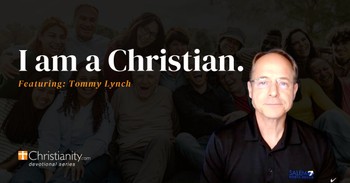Some hymns have such beautiful words that their poetry seems to sing even without music. One of those written many years ago, “Now the Day Is Over,” paints a serene picture of the day’s end and draws prayerful hearts to worship. Churches continue to sing this beloved song, although more than a century has passed since it was penned.
Now the day is over,
Night is drawing nigh;
Shadows of the evening
Steal across the sky.
Written by Sabine Baring-Gould, the hymn “Now the Day Is Over,” with its sweet musical cadence, invites calm worshipful prayer.
When the morning wakens,
Then may I arise
Pure and fresh and sinless
In Thy holy eyes.
It remains one of the most popular pieces that Baring-Gould wrote.
What Do We Know about Sabine Barin-Gould?
Sabine was born in 1834 and died in 1924. An Anglican priest from a prominent family of Lew Trenchard, Devon, England, he published over 1,240 works. Another of his well-known hymns is “Onward, Christian Soldiers.”
One of England’s most prolific writers, Gould published novels, folk songs, poetry, theology, as well as historical and social commentary.
While serving as curate in Yorkshire, he met Grace Taylor, a mill worker, when she was only fourteen. Opposites in nearly every sense, they fell in love, much to the disappointment of both families. Grace grew up in poverty, Sabine in wealth. His family assured him a good education, while she had none. He derived from old, privileged, landowning stock, while she came from uncultured laborers.
Sabine sent Grace to a relative for two years to learn manners, behavior, and proper speech fitting an upper-class lifestyle. Their marriage (which had little support from either side) happily endured for nearly 50 years. Grace stabilized Gould’s deeply emotive character. Together they had fifteen children. Sabine, aged 89 when his wife died, wrote three words on Grace’s gravestone. “Dimidium Animae Meae,” “Half My Life.”
When Was 'Now the Day Is Over' Written?
Gould wrote the lyrics to “Now the Day Is Over” in 1865. The Church Times, an independent Anglican weekly newspaper, printed it the same year. Hymn singing became popular in parish churches, but the Church of England did not officially sanction hymns until the early 19th century. Their growing popularity inspired a collection of hymns to be put together. Published in 1861, Hymns Ancient & Modern became a huge success.
In 1868 the appendix to Hymns Ancient & Modern included “Now the Day Is Over.” As more people became acquainted with the hymn, it grew in popularity until it became known and sung in English-speaking countries around the globe.
Did More than One Person Write “Now the Day Is Over”?
While Sabine Baring-Gould wrote the lovely words to “Now the Day is Over,” Joseph Barnby is credited with the music. A popular conductor and composer of his time, Barnby showed exceptional musical ability at a young age. He directed choirs and became a church organist at age twelve. He edited anthems and hymnals and composed some 246 hymn tunes.
Their words and music have blessed many congregations. However, not only has the church found it inspiring. Its soothing music has made its way into many nurseries as well. “Now the Day is Over” can be found today as a lullaby for children.
Grant to little children
Visions bright of Thee;
Guard the sailors tossing
On the deep-blue sea.
Through the long night-watches
May Thine angels spread
Their white wings above me,
Watching round my bed.
What Does 'Now the Day Is Over' Teach Us?
Profound truths anchor the simple words and tune of “Now the Day Is Over.” Through them, we see the surrounding care of our Heavenly Father. We become aware of Jesus’ sovereign watch during the day and night. We are reminded of God’s ownership over time. It brings us to pray for comfort, weariness, suffering, and protection from evil.
Comfort every sufferer
Watching late in pain
Those who plan some evil
From their sin restrain.
The words of this hymn teach an important underlying truth. In whatever circumstance life allows, God watches over us. Its lesson confirms we can trust Him in everything. As much as Christians needed this comforting confirmation then, we also need it now.
Are There Bible Verses in 'Now the Day Is Over'?
While no actual Bible verses are quoted in “Now the Day Is Over,” the words of Gould’s hymn and God’s Word line up in thought and instruction. The first two verses of the hymn talk about creation. Day, night, sky, stars, birds, beasts, and flowers in each verse all point to the Creator.
The hymn mirrors many verses of comfort, protection, blessing, and forgiveness found in Scripture. The close gives glory to Father, Son, and Spirit in worship.
Some suggest Psalm 91:4-5 may be the passage that prompted Sabine to write the hymn. This Psalm reminds us of God’s daytime protection and nighttime watch. But many other verses also speak of the Lord’s sustaining care and guardianship.
It is evident Sabine’s inspiration came from Scripture. Passages from the Psalms and Proverbs encourage the reader to trust God in every situation. The psalmists and authors of Proverbs wrote from places of brokenness, suffering, joy, and victory. The glorious works of God in creation sing from their songs. Sabine’s words echo ancient voices proclaiming His watch.
“I will both lie down in peace, and sleep; For You alone, O Lord, make me dwell in safety.” (Psalm 4:8 NKJV)
“When you lie down, you will not be afraid; Yes, you will lie down and your sleep will be sweet.” (Proverbs 3:24 NKJV)
Sabine Baring-Gould also connects the singer with Scripture through words of prayer. The Bible declares comfort and repose, which God alone can provide. Illustrations of this lace the familiar Psalm 23 passage replete with green pastures, quiet waters, and comforting rod and staff. Other Psalms promise His care while we sleep and unfailing love and comfort.
What Are Some Similar Hymns to 'Now the Day Is Over'?
Music within the church has long been a contentious subject. Even in the early eighteen-hundreds, contemporary religious songs found controversy within the church. Dissenting congregations from the Church of England began finding their modern expression through new songs, which with time, we now consider old hymns.
Between the years 1810-1850, more than 100 hymnals sprouted. A new frenzy of competing hymn books appeared. The volume of new songs grew so great that few became successful. The idea for a standardized hymn book for all of England arose. The publishing of Hymns Ancient & Modern brought texts and tunes together, allowing prominent congregations and poor parishes access to the same hymns.
Many of the hymns we still sing and love came from that budding period of musical church history. Scripturally inspired lyrics continue to bless with their worshipful prayer and praise.
Other hymns include similar eventide themes. In 1847, Henry Francis Lyte wrote, “Abide with Me; Fast Falls the Eventide.” The poignant words plead for God’s abiding presence through physical nights and nights of the soul.
John Ellerton authored the words to the hymn, “The Day Thou Gavest, Lord, Is Ended.” It assures while we sleep, God does not.
“Come, Ye Thankful People, Come,” penned by Henry Alford in 1844, shares a similar theme through its gratefulness. Blessings within the rhythm of our time remind us of God’s Sovereignty in our life’s seasons.
In both the Old and New Testament periods, singing, choirs, and instruments were integral to worship. Many of David’s hymns are recorded for us to read in the Psalms. After the last supper and shortly before Christ’s death, Jesus sang a hymn with his disciples.
At one time in history, the hymns we consider our musical heritage broke into tradition, disturbing church culture. Those whom God has gifted with words and melody throughout the ages enrich us today. May our voices flow from hearts and rise in worship for His glory.
Glory to the Father,
Glory to the Son,
And to Thee, blest Spirit,
While all ages run.
Further Reading:
What Can We Learn from the Hymn “He Lives”?
The Story Behind the Hymn “Peace, Perfect Peace”
Who Wrote The Hymn “Lord I’m Coming Home”?
Photo Credit: PeopleImages/Getty Images

Her love for pasta and all things Italian stems from years of ministry abroad. She’d love to tell you about it over a steaming cup of cappuccino. Connect with Sylvia on her blog, When the House is Quiet, her Facebook page, or Twitter.



